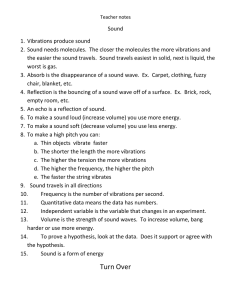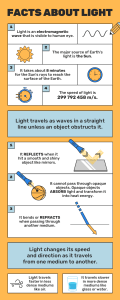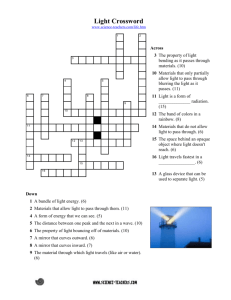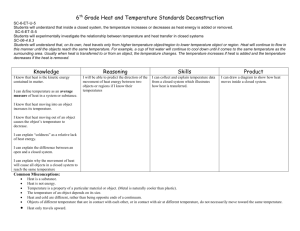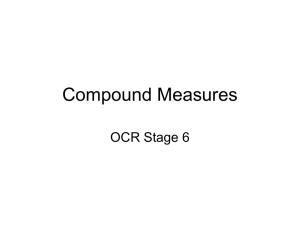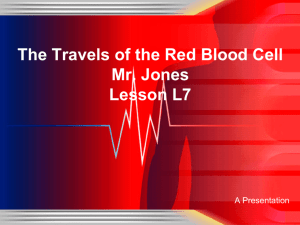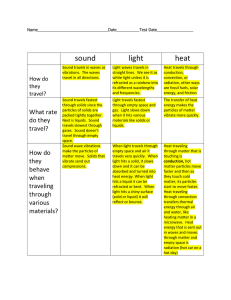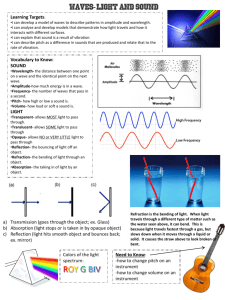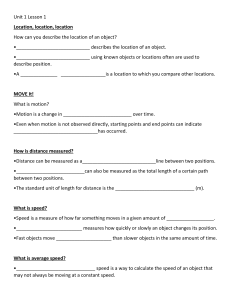Sound and Light Teacher Notes
advertisement
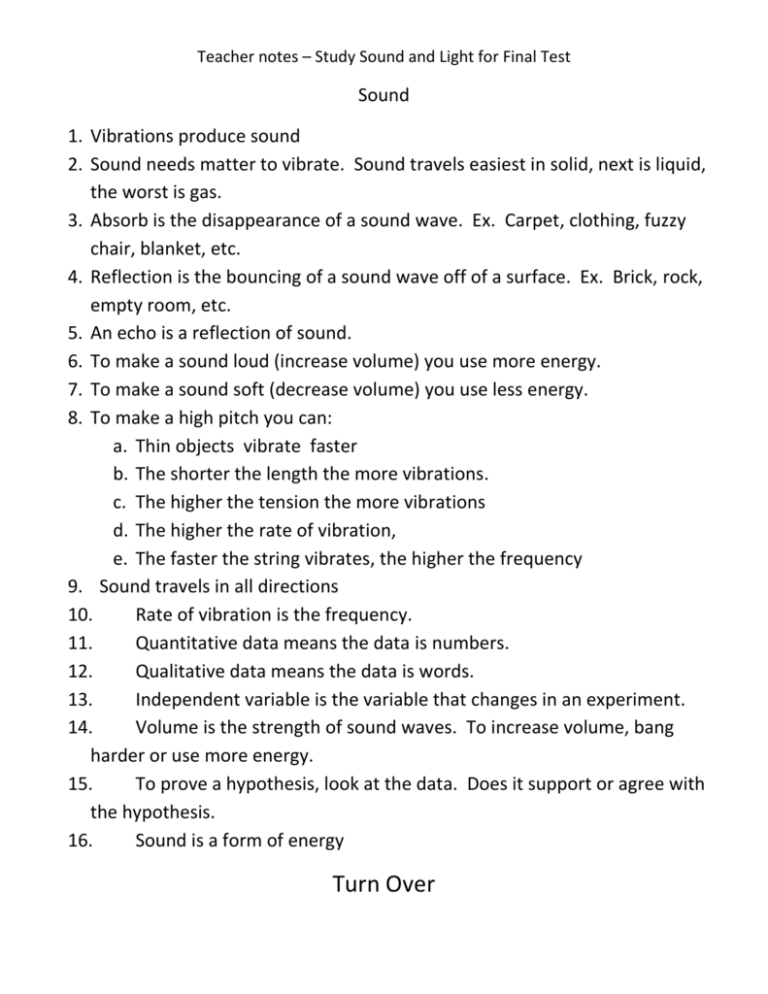
Teacher notes – Study Sound and Light for Final Test Sound 1. Vibrations produce sound 2. Sound needs matter to vibrate. Sound travels easiest in solid, next is liquid, the worst is gas. 3. Absorb is the disappearance of a sound wave. Ex. Carpet, clothing, fuzzy chair, blanket, etc. 4. Reflection is the bouncing of a sound wave off of a surface. Ex. Brick, rock, empty room, etc. 5. An echo is a reflection of sound. 6. To make a sound loud (increase volume) you use more energy. 7. To make a sound soft (decrease volume) you use less energy. 8. To make a high pitch you can: a. Thin objects vibrate faster b. The shorter the length the more vibrations. c. The higher the tension the more vibrations d. The higher the rate of vibration, e. The faster the string vibrates, the higher the frequency 9. Sound travels in all directions 10. Rate of vibration is the frequency. 11. Quantitative data means the data is numbers. 12. Qualitative data means the data is words. 13. Independent variable is the variable that changes in an experiment. 14. Volume is the strength of sound waves. To increase volume, bang harder or use more energy. 15. To prove a hypothesis, look at the data. Does it support or agree with the hypothesis. 16. Sound is a form of energy Turn Over Light 1. Lightt travels in a straight line 2. Transparent – All light travels through it ex: glass window 3. Translucent – Some light travels through it, but you can’t see details ex: wax paper, frosted window 4. Opaque – No Light travels through it. Light forms a shadow. Ex: aluminum foil, crayon 5. Light travels fastest in gas, medium through liquids and not at all through opaque solids 6. Light travels faster than sound. 7. Light can travel through a vacuum like outer space, but sound cannot. Sound needs molecules in order to vibrate. 8. Light will bend when it goes from air to water. This is called refraction. 9. The angle of incoming light is the same as the angle of reflected light. 10. In our lab, a pencil looked broken because the light was refracted as the light went from the air to the water. Water refracts the light. 11. In our lab, light is reflected or bounces off a mirror. 12. Light is a form of energy 13. A mirror has a shiny, smooth surface 14. The color that we see of an object is the reflected light. a. A red apple reflects only red light b. A white object reflects all light c. A black object absorbs all light 15. A prism refracts the light to make a rainbow 16. Transmitted means to move Turn over
